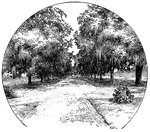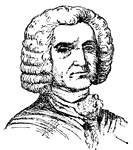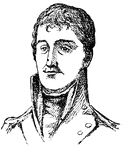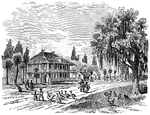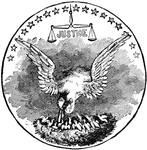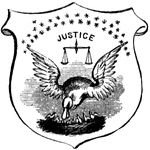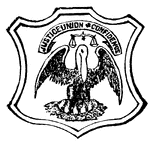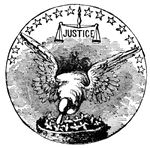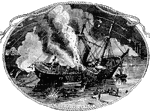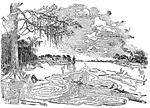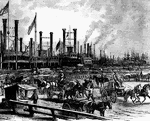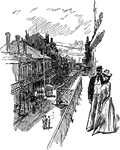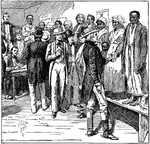The Louisiana ClipArt gallery includes 61 illustrations related to the Bayou State.

20 Star United States Flag, 1818
Color illustration of a 20 Star United States flag. The additional stars represent the states of Indiana,…

20 Star United States Flag, 1818
Black line illustration of a 20 Star United States flag. The additional stars represent the states of…
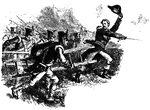
Attack on New Orleans
The attack on New Orleans, during the Battle of New Orleans during the War of 1812.

Battle of Baton Rouge
The Battle of Baton Rouge, also known as Magnolia Cemetery, was a ground and naval battle in the Civil…
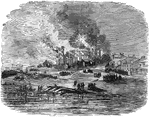
Burning of Baton Rouge
"Banks's Expedition- burning of the state capitol of Louisiana, Baton Rouge, Tuesday night, December…

Gunboats at the Battle of Baton Rouge
Gunboats at the Battle of Baton Rouge, also known as Magnolia Cemetery, was a ground and naval battle…

Baton Rouge, LA
An illustration of Baton Rouge, Louisiana from the Mississippi River. Baton Rouge is located in the…
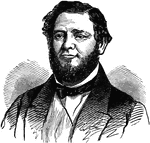
Judah Philip Benjamin
Judah Philip Benjamin (August 6, 1811 – May 6, 1884) was an American politician and lawyer. He was…

Chalmette's Plantation
The Battle of New Orleans took place on January 8, 1815, and was the final major battle of the War of…

Civil War Musical Entertainment
"Extempore musical and terpischorean entertainment at the United States arsenal, Baton Rouge, La., under…
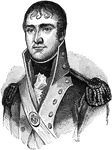
William Charles Cole Claiborne
William Charles Cole Claiborne (1775 - 23 November 1817) was a United States politician, best known…

Cotton Centennial
A cotton press yard of the Cotton Centennial in the 1884 World's Fair in New Orleans, Louisiana.
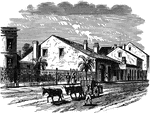
The Old Courthouse Where Jackson was Fined for Contempt of Court
When civil law was restored, Jackson was fined for contempt of court for proclaiming martial law in…

Cutting Levees
"Cutting the levees near the state line of Louisiana and Arkansas, twenty miles above Lake Providence,…
!["Capture of Fort De Russy, La., on the 14th of March, 1864, by the Federal forces under General Andrew Jackson Smith. This fort was captured, March 14th, 1864, by the Federal forces under General A. J. Smith. The expedition left Vicksburg on March 10th, landed at Summerville, La., on the 13th, and marched to Bayou Glace, where General Scurri's Confederate brigade had been encamped, which fled on the approach of the transports, leaving considerable camp equipage and commissary stores. General Smith pushed forward to Yellow Bayou, where strong fortifications had been erected; but the Confederates again fled. As he came up the enemy was pressed, and some skirmishing occurred, resulting in the capture of several prisoners and a small wagon train. At daylight the entire command started for Fort de Russy, twenty-eight miles distant, hotly pursued by General Dick Taylor, who hoped to save the fort; but Smith had the lead, and at four o'clock in the afternoon the Third and Ninth Indiana Batteries opened on the fort, which replied vigorously with three of its heaviest guns. The cannonade continued an hour, when General Smith ordered the First and Second illinois Regiments, Sixteenth Corps, under General Mower, to charge the enemy's rifle pits and storm the fort. The Eighty-ninth and One Hundred and Nineteenth Indiana and Twenty-fourth Missouri Regiments charged over deep ditches and a thick abatis in the face of a galling fire, and within twenty minutes after the order was given the [African American] sergeant of the Fifty-eighth Illinois Volunteers planted the American flag upon the enemy's works."— Frank Leslie, 1896](https://etc.usf.edu/clipart/11700/11750/derussy_11750_mth.gif)
Fort de Russy
"Capture of Fort De Russy, La., on the 14th of March, 1864, by the Federal forces under General Andrew…

James Biddle Eustis
James Biddle Eustis (August 27, 1834 - September 9, 1887) was a United States Senator from Louisiana.
Federal Fleet
"Panoramic view of the Federal fleet passing the forts of the Mississippi, on its way to New Orleans,…

Battle of Grand Coteau
"Battle of Grand Coteau, La., November 3rd, furious attack on the Sixtieth Indiana, Colonel Owen. On…

Battle of Grand Coteau
"The war in Louisiana- Battle of Grand Coteau- capture of the Sixty-seventh Indiana by the Texas Mounted…
!["Assault of the Second Louisiana [African American] Regiment on the Confederate works at Fort Hudson, May 27th, 1863. The Battle of Fort Hudson was a severe and well-fought action. The Federal troops displayed their usual bravery, and were well handled by General Banks, driving the enemy to his second line of works. Of the [African American] regiments General Banks, in his official report, says: 'They answered every expectation. Their conduct was heroic. No troops could be more determined or more daring. They made during the day three charges upon the batteries of the enemy, suffering very heavy losses, and holding their position at nightfall with the other troops on the right of our line. The highest commendation is bestowed upon them by all officers in command on the right. Whatever doubt may have existed heretofore as to the efficiency of organizations of this character, the history of this day proves conclusively to those who were in a condition to observe the conduct of these regiments that the Government will find in this class of troops effective supporters and defenders. The severe test to which they were subjected, and the determined manner with which they encountered the enemy leave upon my mind no doubt of their ultimate success. They require only good officers, commands of limited numbers, and careful discipline to make them excellent soldiers.'"— Frank Leslie, 1896](https://etc.usf.edu/clipart/11800/11805/ft-hudson_11805_mth.gif)
Fort Hudson
"Assault of the Second Louisiana [African American] Regiment on the Confederate works at Fort Hudson,…
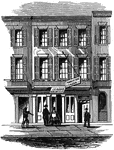
Jackson's Headquarters, New Orleans
During the War of 1812, when British forces threatened New Orleans, Jackson took command of the defenses,…
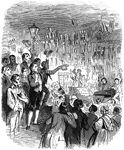
Jackson's Reception by the Citizens of New Orleans
Andrew Jackson's reception by the citizens of New Orleans following his defeat of the British in the…

Lafayette Parish
"The war in Louisiana- General Franklin's army crossing the prairie in Lafayette Parish, November 16th,…

Lake Providence
"Lake Providence, La., headquarters of General McPherson and the Federal division under his command.…
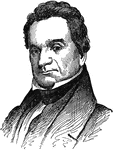
Edward Livingston
Edward Livingston (26 May 1764–23 May 1836) was a prominent American jurist and statesman. He was…
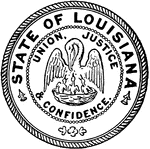
Seal of Louisiana
The seal of the state of Louisiana. The seal shows a pelican in her piety, feeding her young with her…
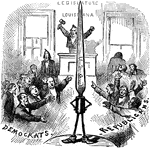
Louisiana's Martial Law in 1875
Martial Law in Louisiana in 1875. The U.S. Bayonet is not partisan in the Louisiana Legislature.

War in Louisiana
"The war in Louisiana. The army of General Banks crossing Vermilion Bayou, October 10th, 1863. Our artist…

War in Louisiana
"The war in Louisiana- Battle of Mansfield, between General Banks and General Dick Taylor, April 8th,…

War in Louisiana
"The war in Louisiana. General Banks's army, in the advance on Shreveport, crossing Cane River, March…
!["The Plantation Police, or Patrol, was an institution peculiar to the Slave States. It was a semi-military organization, raised and supported by the planters, but recognized by the old State authorities. Their principal duty was to visit the various plantations and patrol the roads at night, arresting all [African Americans] and others not having proper passes. The war, the President's proclomation, and the actual possession of most of the State of Louisiana by the Federal authorities, rendered these patrols doubly rigorous. Some of the [African Americans] submitted reluctantly. The [African American] in the foreground is a speciman of this class. He seems to yield to the superior force of a tottering power, satisfied that his day is at hand; others show the obsequious, submissive stamp- the [African American] satisfied with his lot if he is clothed and fed."— Frank Leslie, 1896](https://etc.usf.edu/clipart/11600/11643/plant-police_11643_mth.gif)
Plantation Police
"The Plantation Police, or Patrol, was an institution peculiar to the Slave States. It was a semi-military…

Port Eads
Port Eads, Louisiana, is located at the southern tip of the Mississippi River, also known as South Pass…

Red River Expedition
The Red River Campaign or Red River Expedition consisted of a series of battles fought along the Red…
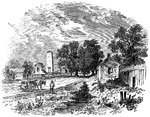
Remains of Rodriguez's Canal in 1861
The Battle of Rodriguez's Canal was a prelude to the Battle of New Orleans that occurred near New Orleans…

Ship Island
"Ship Island, near the mouth of the Mississippi- United States war steamer "Mississippi" firing on a…
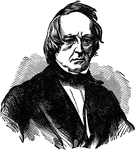
John Slidell
John Slidell (1793 – July 26, 1871) was an American politician, lawyer and businessman.

Kirby Smith
"Voluntary dispersion of Kirby Smith's Confederate army at Shreveport, La., May 23rd, 1865. There was…
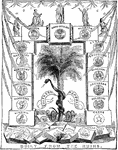
Southern Republic Built from the Ruins
A political cartoon of the Southern states being built from the ruins after the Civil War.
